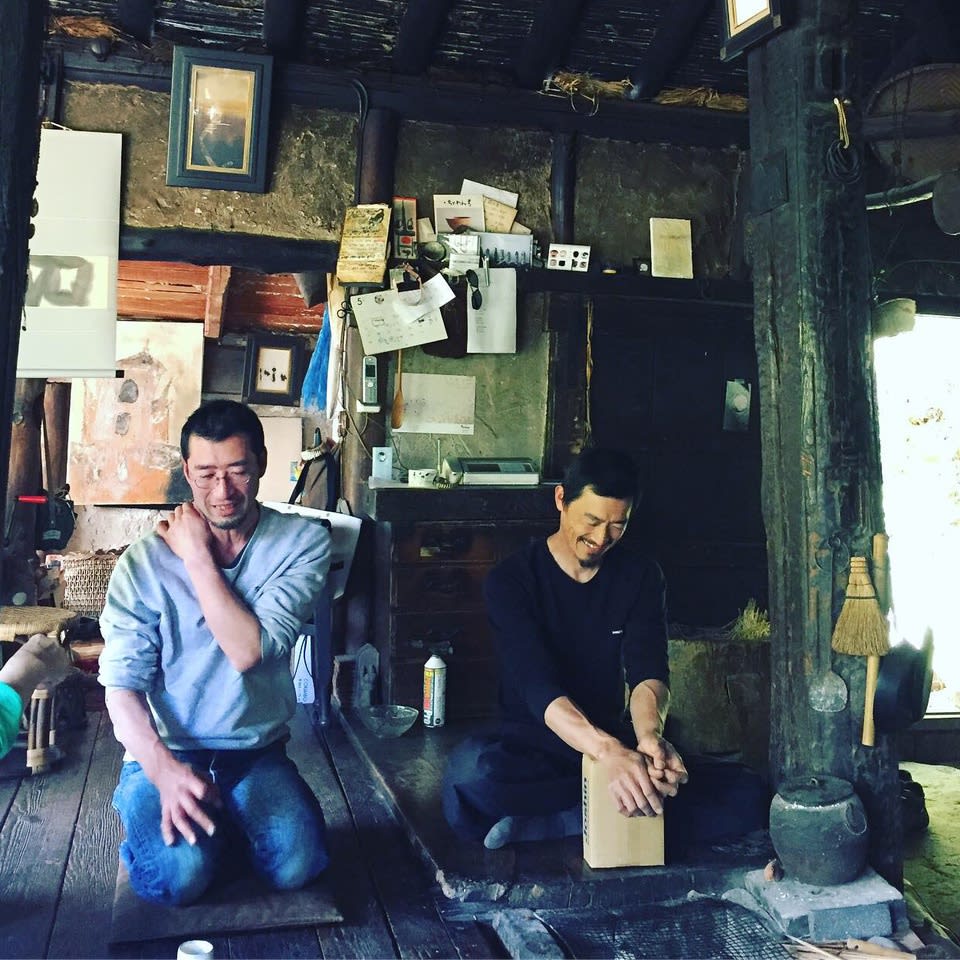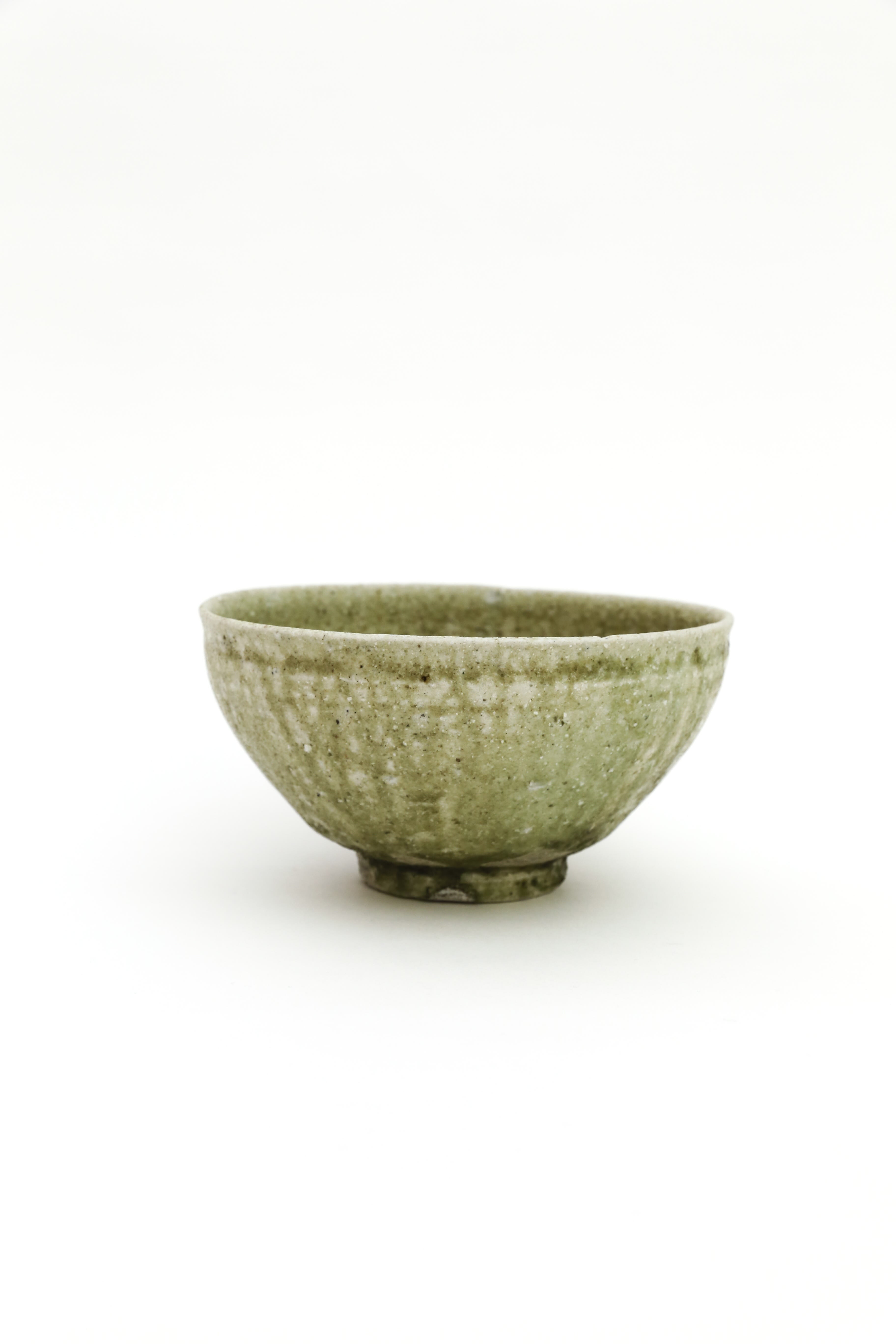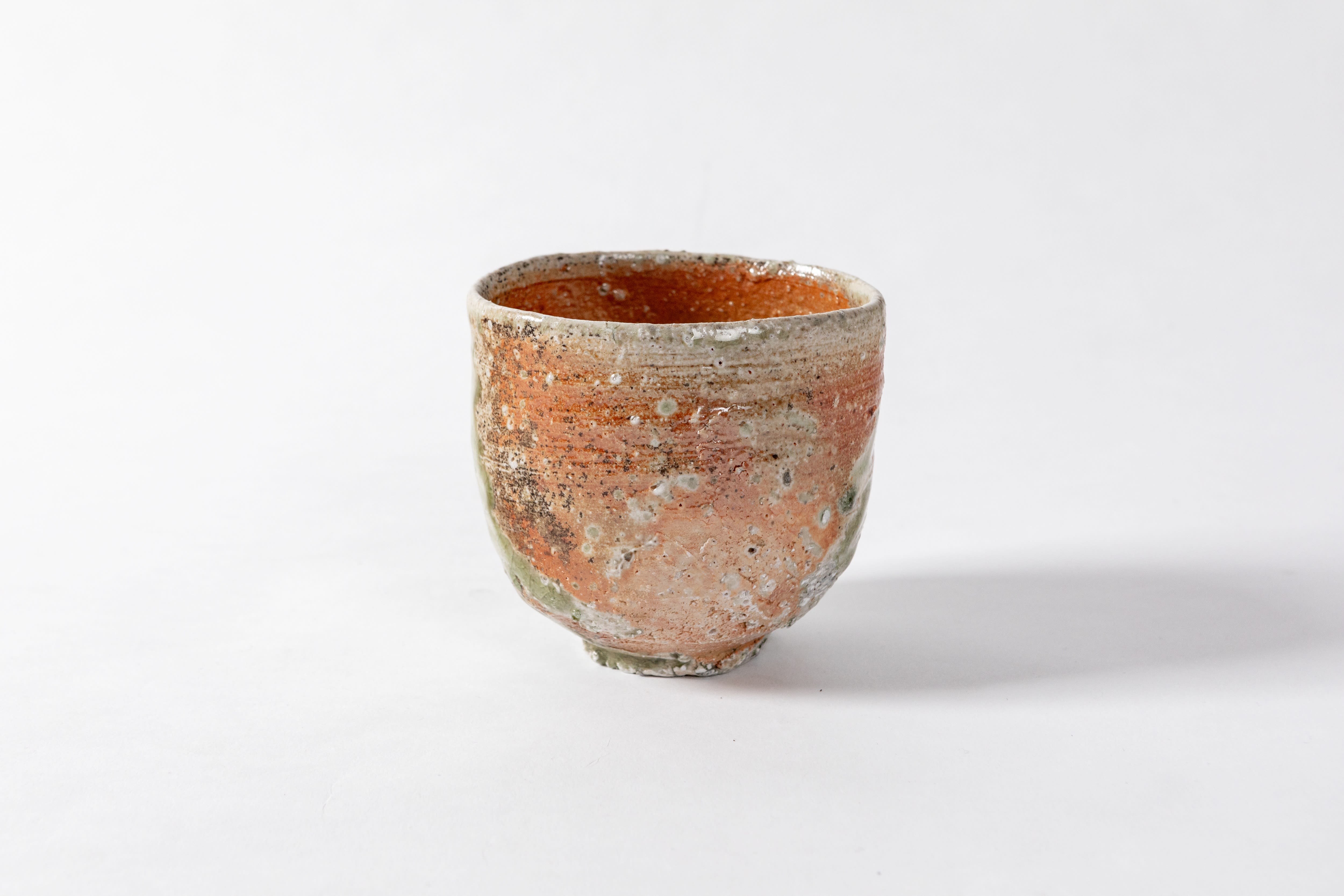
The two sons of one of the most sought-after potters in Japans, Shiro Tsujimura, are like branches on a tree. Their mother, Mieko, nurtured and loved the boys. She fed them vegetables from their gardens and fresh fish from the stream. They learned the ceramic fundamentals and discipline from their father. Over the years, they grew and developed their paths. Yui the eldest brother, established his style while Kai resembles a likeness of their father.

Yui 唯 (b.1975) is gentle, quiet, and humble personality match his ceramic aesthetics. He was initially inspired by ancient Sueki pieces originating in Korea in the fifth century AD, has experimented over the years and has perfected his style. As he mixes various clays to achieve luscious white, green/blue ceramics with natural ash glazes from a reduction during firing in the kiln has become his signature style. When he takes pieces out of the Anagama kiln, rough metallic ash covers them. Once they are cool, he polishes away the ash carefully with stone, sandpaper, and water. After sanding, the pieces are illuminated white and are smooth like a stone that ocean waves have worn away. The green and blue colors appear like crystals in a cave. The juxtaposition of the glass-like green and ocean-like blues is vibrant against the white stoneware. Similar to his character, 唯, which means unique, only, solely, his work is also individual.

Yui Tsujimura Natural Ash Wine Cup Ceramic
(C19824NP)

Yui Tsujimura Ash Bowl
“It is a mode of expression that best suits me. I make what I want to make. I ended up making Sueki.” - said Yui Tsujimura 2003

Kai 塊 (b.1976) is the younger brother. Unlike Yui, Kai's work resembles that of their fathers. He studied closely by his father's side and grasped the shapes, forms, and glazes his father taught him, styles like Oribe, Shino, Shigaraki, Iga, Kohiki, and Karatsu. His powerful, vital, and energetic personality is what motivates him to step out of his father's shadow. In 2001, as an independent artist, he decided to set up shop in Nara Prefecture and become as successful as his father. While sometimes it is difficult to distinguish whose is whose, all of the stonewares encompass each of their spirits with physical markings. His character, 塊 , means block or lump, like the original mass of clay before it's transformed into a forceful masterpiece. Kai's strength is in making jars and large pots with bold designs and statements. Time will tell if he becomes a gifted as his father.
 Kai Tsujimura Karatsu Tea Bowl
Kai Tsujimura Karatsu Tea Bowl

(C19387)
“When I was young, about 4 years old, my father asked my brother and I to help him mix clay. This was the only direct lesson he had ever taught me regarding yakimono,” Said Kai Tsujimura 2003

While the brothers may be similar, they also have some differences. While Kai uses kohiki-style stoneware, which uses lay dug straight from his land, Yui mixes Shigaraki and Iga clay, which is how he perfected dreamy white pottery. Kai forms Iga and Shigaraku wares, uses kohiki slips, paints Karatsu, and makes sizeable Yakishiem tsubo like Shiro. Yui’s work is not only different from his family but also different from most pottery today. His work merges past and present and is particularly eye-catching. His iridescent colors mimic frozen water at the bottom of a lake.
The brothers traveled along the same path, but they branched off and made names for themselves. Their deep connection to the earth and lessons from their father will always remind them where they started. Both of them find pure joy in working with their hands and creating beauty from the earth. They have forged their own aesthetic and set themselves apart from their father. Yui’s elegant and refined pieces speak for themselves and their humble maker. Kai’s influential masterpieces are solid and resilient.
“A Visit With Tsujimura Kai Plus His Debut Exhibition at EY Net.” July 21, 2021. http://www.e-yakimono.net/html/tsujimura-kai-exhibit.html.


